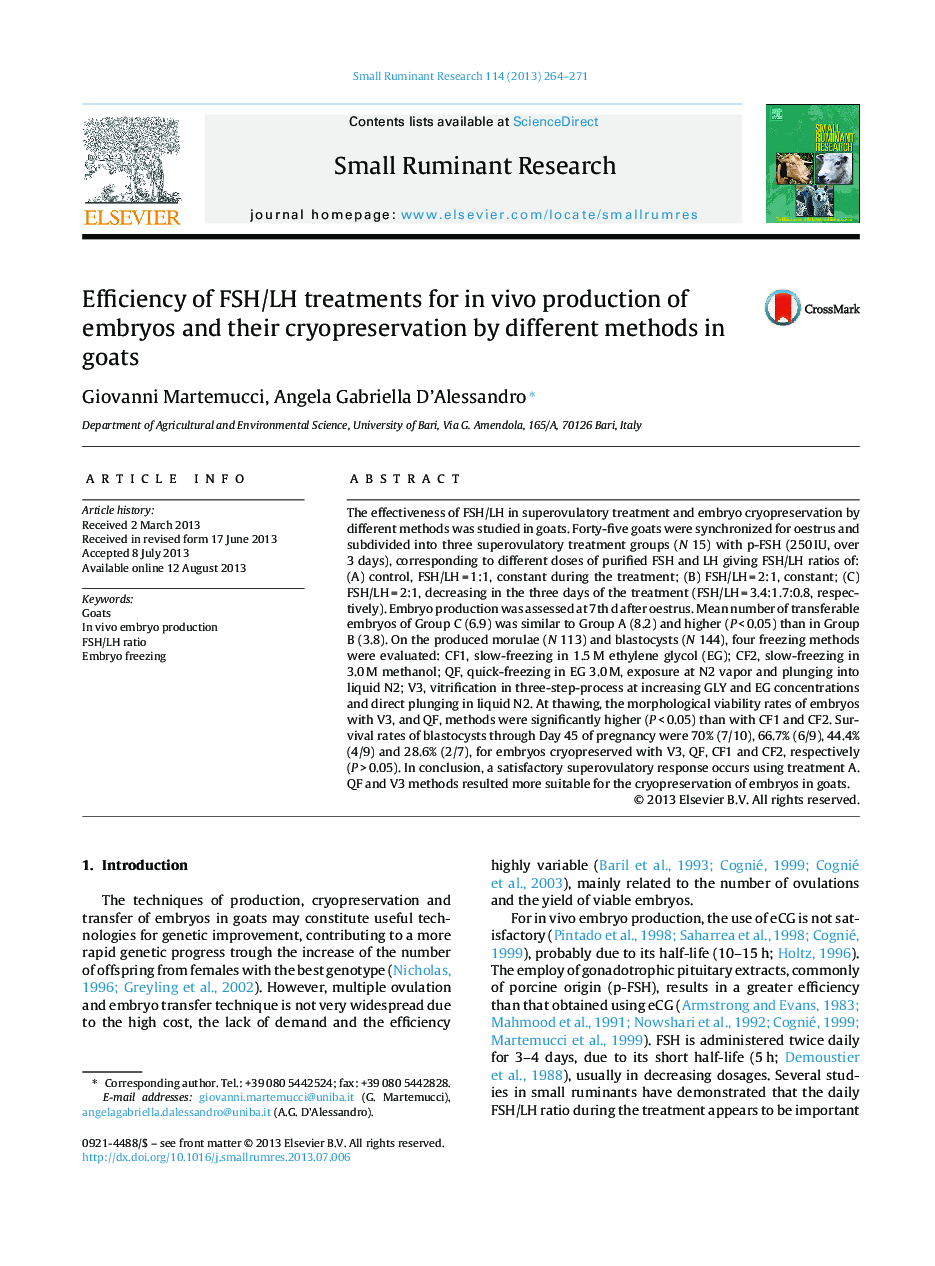| Article ID | Journal | Published Year | Pages | File Type |
|---|---|---|---|---|
| 5795806 | Small Ruminant Research | 2013 | 8 Pages |
The effectiveness of FSH/LH in superovulatory treatment and embryo cryopreservation by different methods was studied in goats. Forty-five goats were synchronized for oestrus and subdivided into three superovulatory treatment groups (N 15) with p-FSH (250Â IU, over 3 days), corresponding to different doses of purified FSH and LH giving FSH/LH ratios of: (A) control, FSH/LHÂ =Â 1:1, constant during the treatment; (B) FSH/LHÂ =Â 2:1, constant; (C) FSH/LHÂ =Â 2:1, decreasing in the three days of the treatment (FSH/LHÂ =Â 3.4:1.7:0.8, respectively). Embryo production was assessed at 7th d after oestrus. Mean number of transferable embryos of Group C (6.9) was similar to Group A (8.2) and higher (PÂ <Â 0.05) than in Group B (3.8). On the produced morulae (N 113) and blastocysts (N 144), four freezing methods were evaluated: CF1, slow-freezing in 1.5Â M ethylene glycol (EG); CF2, slow-freezing in 3.0Â M methanol; QF, quick-freezing in EG 3.0Â M, exposure at N2 vapor and plunging into liquid N2; V3, vitrification in three-step-process at increasing GLY and EG concentrations and direct plunging in liquid N2. At thawing, the morphological viability rates of embryos with V3, and QF, methods were significantly higher (PÂ <Â 0.05) than with CF1 and CF2. Survival rates of blastocysts through Day 45 of pregnancy were 70% (7/10), 66.7% (6/9), 44.4% (4/9) and 28.6% (2/7), for embryos cryopreserved with V3, QF, CF1 and CF2, respectively (PÂ >Â 0.05). In conclusion, a satisfactory superovulatory response occurs using treatment A. QF and V3 methods resulted more suitable for the cryopreservation of embryos in goats.
